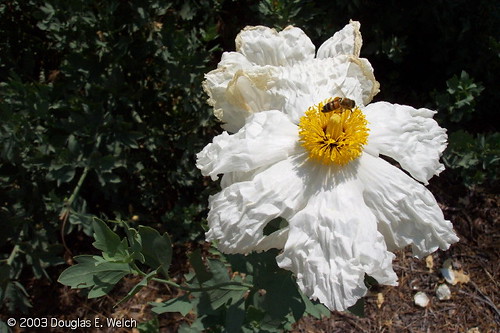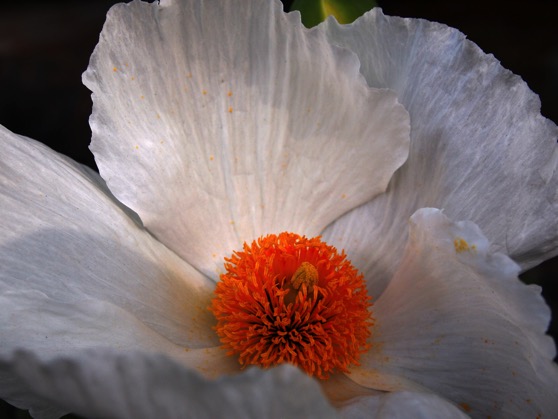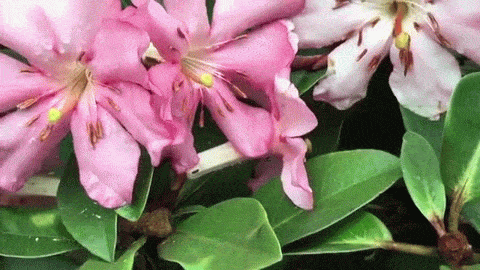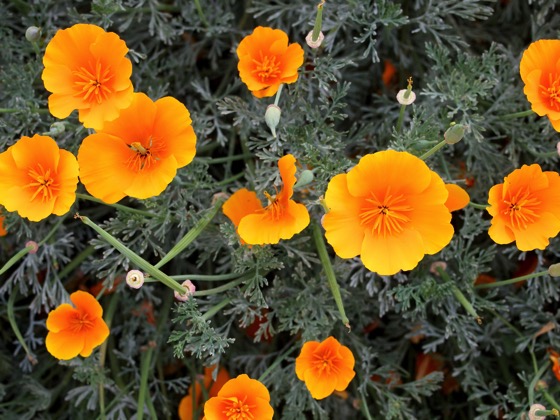Matilija Poppy (Romneya)
This is one of the flowers that — the first time you see it — looks artificial or fake. Surely, nothing can look look so perfect and so much like tissue paper in real life? Fortunately, though, they are real and, if you live in California or a similar climate, you might even be able to grow them in your own garden.
I don’t have any matilija poppies growing in my garden, as I don’t really have enough sun for them, but luckily a nearby neighbor has them as part of their drought tolerant garden. I regularly walk a route that passes by this garden and I am always watching out for these to bloom. Just last week, I was rewarded with many beautiful flowers and had my camera ready — as I often do when out walking.
Get this photo on a variety of fun products

Photos: Douglas E. Welch
What are your thoughts on this Interesting Plant? Drop a note in the comments!
Romneya /ˈrɒmniːə/[1] is a genus of flowering plants belonging to the poppy family (Papaveraceae). There are two species in genus Romneya, which was named for Irish astronomer John Thomas Romney Robinson.[2] They are known commonly as Matilija poppies (/məˈtɪlᵻhɑː/ mə-til-i-hah) or tree poppies and are native to southern California and northern Mexico.
They are perennial subshrubs with woody stems. They may grow to a height of 2.5 meters (8.2 feet) and a width of 1 m (39 in), with the flowers up to 13 cm (5.1 in) across. The silvery greenleaves are deeply cut, with a small fringe of hairs at the margins.
They are notable for their large white flowers with intense yellow centers, blooming in summer. Romneya produce the largest flowers of any members of the poppy family.[3] These flowers prefer a warm, sunny spot and fertile soil with good water drainage. They are not easily grown but once established are difficult to remove. In the wild, they are known as “fire followers” as they can be frequently, but not exclusively, found in burned areas.[4] It is also known as the “fried egg flower” or “fried egg plant”.[5]
The two species are:
- Romneya coulteri Harv. – Coulter’s Matilija poppy
- Romneya trichocalyx Eastw. – Bristly Matilija poppy. Some consider this a variety of Romneya coulteri, but it is accepted in recent manuals. — Wikipedia
More information on Matilija Poppy (Romneya):
- Matilija Poppy (Romneya) on Wikipedia
- Matilija Poppy (Romneya) at Matilija Nursery
- Matilija Poppy (Romneya) at A Growing Passion
- Melocactus matanzanus (Turk’s Cap Cactus)
- Coleus “Redhead”
- Tiarella ‘Pink Skyrocket’
- Bacopa monnieri (Water hyssop)
- Lycoris squamigera (Naked Lady Lily)
- Kong Coleus (Plectranthus/Solenostemon scutellarioides “Kong Series”)
- Crassula plegmatoides
- Agave victoriae-reginae
- Mountain Cornflower (Centaurea montana)
- Euphorbia ‘Black Bird’
- Firecracker vine (Ipomoea lobata)
- Eryngium yuccifolium
- Dahlia ‘Karma Choc’
- Echeveria Agavoides
- Jerusalem Sage (Phlomis fruticosa)
- Hummingbird Sage (Salvia spathacea)
- Seaside Daisy, Beach Aster (Erigeron glaucus)
- Toyon (Heteromeles arbutifolia)
- California Lilac (Ceanothus)
- Bigberry Manzanita (Arctostaphylos glauca)
- Douglas Iris (Iris douglasiana)
- Malva Rosa (Lavatera assurgentiflora)
- Baby Blue-Eyes (Nemophila)
- Coral Bells or Alum Root (Heuchera)
- Deer Grass (Muhlenbergia rigens)
- Echeveria ‘Lola’
- View all past “Interesting Plant” posts
Interesting Plant is a series from A Gardener’s Notebook blog and podcast that highlights the most interesting plants I find in my Internet and real-world travels — Douglas









